The Best Gluten-Free Chocolate Chip Cookies: Crispy, Chewy, & Irresistibly Delicious
Prepare to be amazed! These aren’t just “good for gluten-free” chocolate chip cookies – they are genuinely, undeniably delicious. Boasting perfectly crisp edges, wonderfully soft and chewy centers, and a rich, buttery flavor profile, these cookies are so good they’ll convert even your non-GF friends into devoted fans. Forget everything you thought you knew about gluten-free baking; this recipe delivers the classic cookie experience you’ve been craving.
I poured my heart into developing this recipe, specifically for my fellow cookie enthusiasts who deeply miss the gooey, buttery perfection of a traditional chocolate chip cookie – perhaps even their mom’s or grandma’s cherished recipe. My journey involved rigorous testing, pushing through 8 different iterations, to finally create a cookie that truly captures the authentic taste and texture of its gluten-containing counterparts. The result is a recipe that not only meets but exceeds expectations, proving that gluten-free can be just as, if not more, satisfying.

This ultimate gluten-free chocolate chip cookie recipe was originally published on November 28, 2021, and has been thoughtfully updated with new information and expanded tips on September 3, 2025, to ensure you achieve baking success every time.
Key Ingredients & Smart Substitutions for Perfect GF Cookies
Crafting these delectable gluten-free chocolate chip cookies primarily utilizes common pantry staples. However, understanding the nuances of a few key ingredients and potential substitutions will elevate your baking game and ensure consistently exceptional results.
Butter: The foundation of a great cookie often starts with butter. You can use either traditional dairy butter or a high-quality dairy-free butter substitute. The most crucial factor is that your butter is softened to room temperature. This allows it to cream beautifully with the sugars, incorporating air and contributing to that desirable fluffy texture. For an optimal cookie texture, aim for butter (dairy or vegan) with a fat content of at least 80%. If your butter has a lower fat content – specifically less than 8 grams per 2 teaspoons – you can easily adjust by combining ⅔ cup butter with ⅓ cup refined coconut oil or shortening. This blend helps to maintain the rich texture and prevent overly thin or greasy cookies.
Sugars: This recipe intelligently employs a combination of granulated sugar, brown sugar, and corn syrup, each playing a vital role in the cookie’s final structure and flavor. The granulated sugar is key for achieving those wonderfully crisp edges and contributing to the overall sweetness. Brown sugar, with its molasses content, imparts a deep, rich, caramel-like flavor that is essential for classic chocolate chip cookies, while also adding moisture for chewiness. The corn syrup is a secret weapon, specifically included to ensure the centers remain exceptionally soft and delightfully fudgy, preventing them from drying out. While each sugar serves a distinct purpose, if you absolutely must choose only one, light brown sugar is the most versatile option for maintaining a good balance of flavor and texture.
Gluten-Free 1-to-1 Flour: The choice of gluten-free flour blend is paramount. My personal preference is Bob’s Red Mill 1-to-1 Baking Flour due to its consistent results and reliable performance. However, any reputable cup-for-cup or measure-for-measure all-purpose gluten-free flour blend that explicitly states it includes xanthan gum should work effectively. Xanthan gum is a crucial ingredient in gluten-free baking as it acts as a binder, mimicking the elasticity and structure that gluten provides in traditional flour, thus preventing crumbly or dry cookies. Always check your chosen blend’s ingredient list for xanthan gum to ensure success. For more in-depth information on different types of gluten-free flours and their uses, refer to this comprehensive post on gluten-free flours.
Chocolate Chips: This is where personal preference shines! Feel completely free to use your favorite type of chocolate chips – whether that’s classic semi-sweet, creamy milk chocolate, or intensely rich dark chocolate. For an extra gourmet touch, you can even chop up a high-quality bar of your favorite chocolate into chunks; this often results in delightful pockets of melted chocolate throughout the cookies. Don’t hesitate to experiment with different varieties like white chocolate chips or even a mix of several types for a complex flavor.
Flaky Sea Salt: While technically listed as optional, I cannot stress enough how highly I recommend adding a delicate sprinkle of flaky sea salt (also known as Fleur de sel) to your cookies. This small addition makes an enormous difference. The salt acts as a brilliant counterbalance to the sweetness of the cookies and chocolate, enhancing all the flavors and creating a more sophisticated, well-rounded taste experience. It’s the culinary equivalent of adding a period to a perfect sentence.

Mastering Gluten-Free Chocolate Chip Cookies: Essential Pro Tips
Achieving the most delicious gluten-free chocolate chip cookies requires attention to detail. These professional tips will ensure your cookies are nothing short of spectacular:
Precision with a Kitchen Scale: While measuring cups are traditional for many home bakers, they are notoriously inconsistent. The amount of flour in a “cup” can vary significantly depending on how it’s scooped and packed, potentially leading to a dough with too much flour – resulting in dry, dense, and unappealing cookies. By embracing a digital kitchen scale, you can measure your ingredients by weight (grams or ounces) with pinpoint accuracy. This method guarantees the precise ratios needed for consistent, perfectly textured, and delicious cookies every single time. It’s a small change that makes a huge difference.
Uniformity with a Cookie Scoop: For professional-looking and evenly baked cookies, a cookie scoop is an indispensable tool. Using a scoop ensures that every single cookie ball is the same size, which is critical for uniform baking. When all cookies are the same size, they bake at the same rate, preventing some from being overdone while others are underbaked. Beyond consistency, a scoop is significantly faster and less messy than using spoons and eliminates the need to roll the dough in your hands, making the process more efficient and enjoyable.
Elevate Appearance with Extra Chocolate Chips: This is a simple yet incredibly effective trick to achieve that coveted “bakery-window” aesthetic. Before your scooped cookie dough balls go into the oven, gently press about 5 or 6 extra chocolate chips onto the top of each one. As the cookies bake and spread, these surface-level chocolate chips will melt beautifully, creating those irresistible pools of chocolate that look incredibly appetizing and professional. It’s the ultimate “chef’s kiss” for your homemade creations.
Don’t Overbake: Gluten-free cookies can go from perfectly baked to dry and crumbly very quickly. Keep a close eye on them towards the end of the baking time. Look for edges that are set and lightly golden brown, while the centers still appear slightly soft and underbaked. They will continue to cook and set as they cool on the baking sheet.
Cool on the Baking Sheet: Resist the urge to transfer your warm cookies immediately to a wire rack. Allowing them to cool on the hot baking sheet for at least 10 minutes helps them to set properly, firm up their structure, and continue to develop that desirable chewy texture without falling apart. This crucial step prevents crumbly cookies and ensures they are sturdy enough to handle.
Step-by-Step: Crafting Your Gluten-Free Chocolate Chip Cookies
Making the dough for these delicious gluten-free cookies is surprisingly quick, requiring just about 15 minutes of active prep time. Follow these simple steps to bring your perfect cookies to life:
Step 1: Cream the Wet Ingredients. In a large mixing bowl, combine the softened butter, brown sugar, granulated sugar, and corn syrup. Using an electric mixer, beat these ingredients together on medium speed for a couple of minutes until the mixture becomes noticeably lighter in color, fluffy, and well combined. This creaming process incorporates air, which is essential for a light and tender cookie. Next, add the large egg, along with the vanilla extract, and continue to beat until the mixture is thoroughly fluffed and creamy, ensuring all ingredients are fully incorporated.
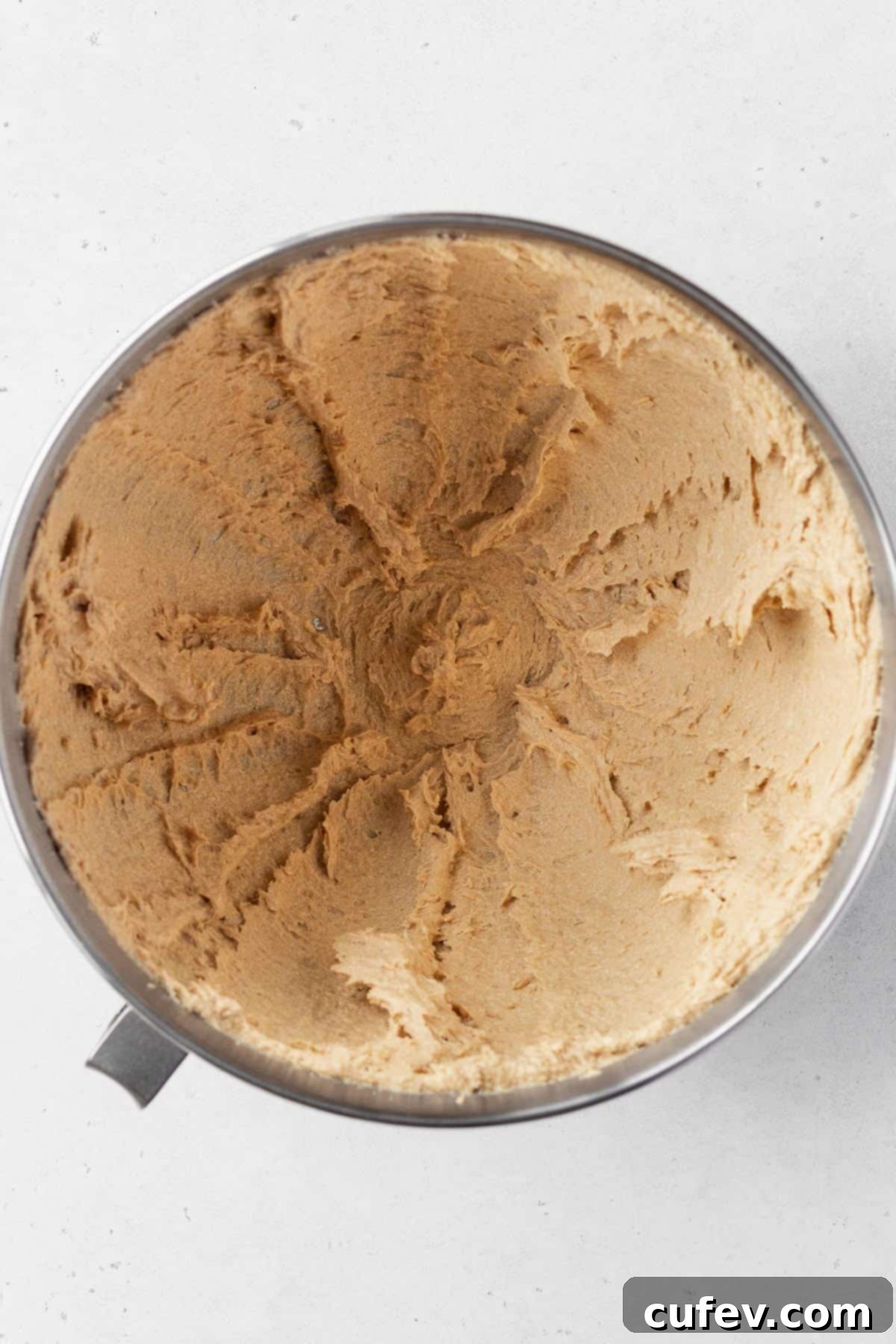
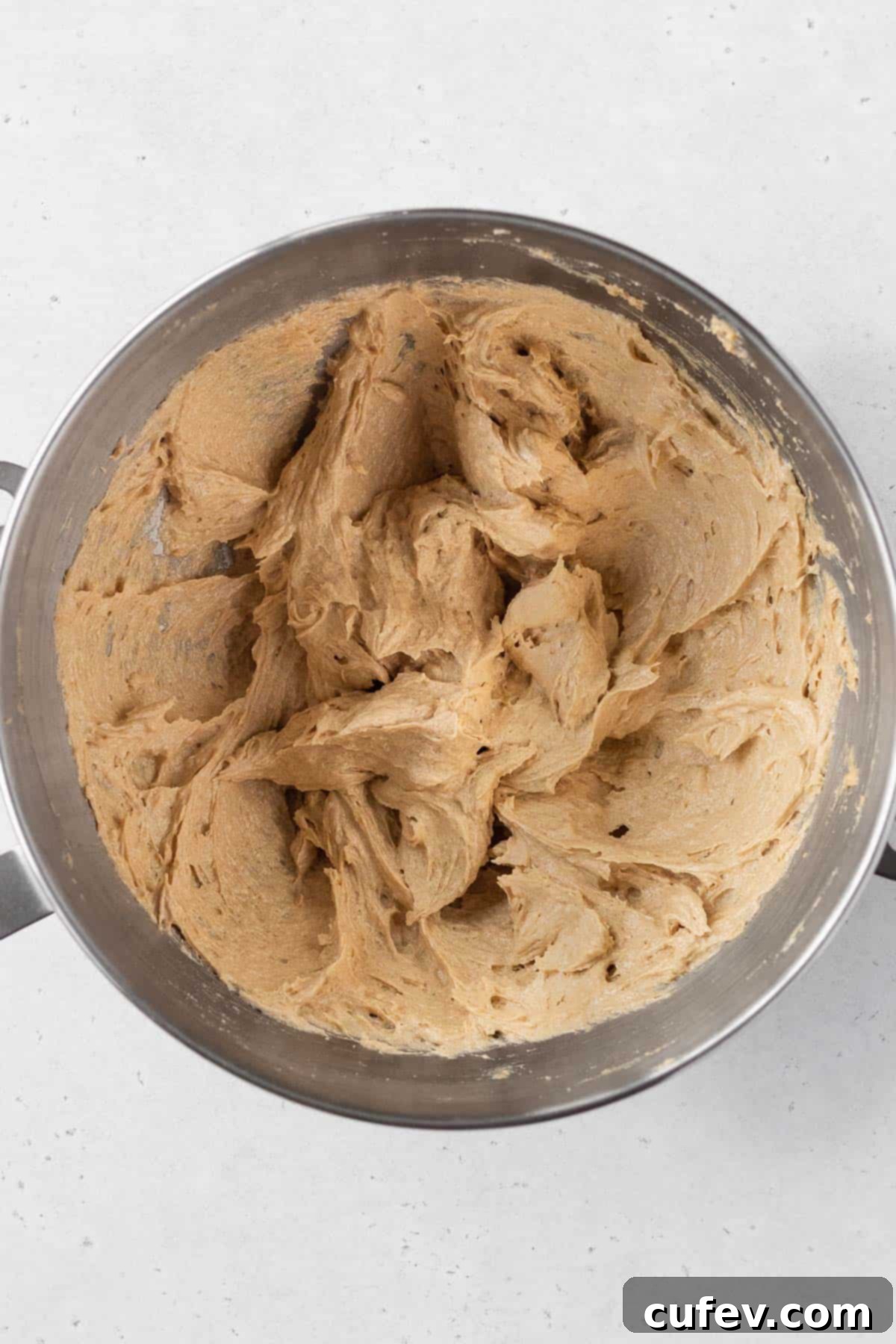
Step 2: Prepare the Dough and Chill. In a separate, medium-sized bowl, whisk together the gluten-free flour blend, fine salt, baking soda, and baking powder until thoroughly combined. This ensures the leavening agents are evenly distributed throughout the dry ingredients. Gradually add this dry mixture to your creamed butter mixture, mixing on low speed until a thick but workable cookie dough forms. Be careful not to overmix; stop as soon as the flour streaks disappear. Finally, gently fold in your chosen chocolate chips with a spatula. Once combined, cover the bowl tightly with plastic wrap and transfer it to the refrigerator. Allow the dough to chill for a minimum of 2 hours, or ideally, overnight, while you preheat your oven to the recommended temperature.
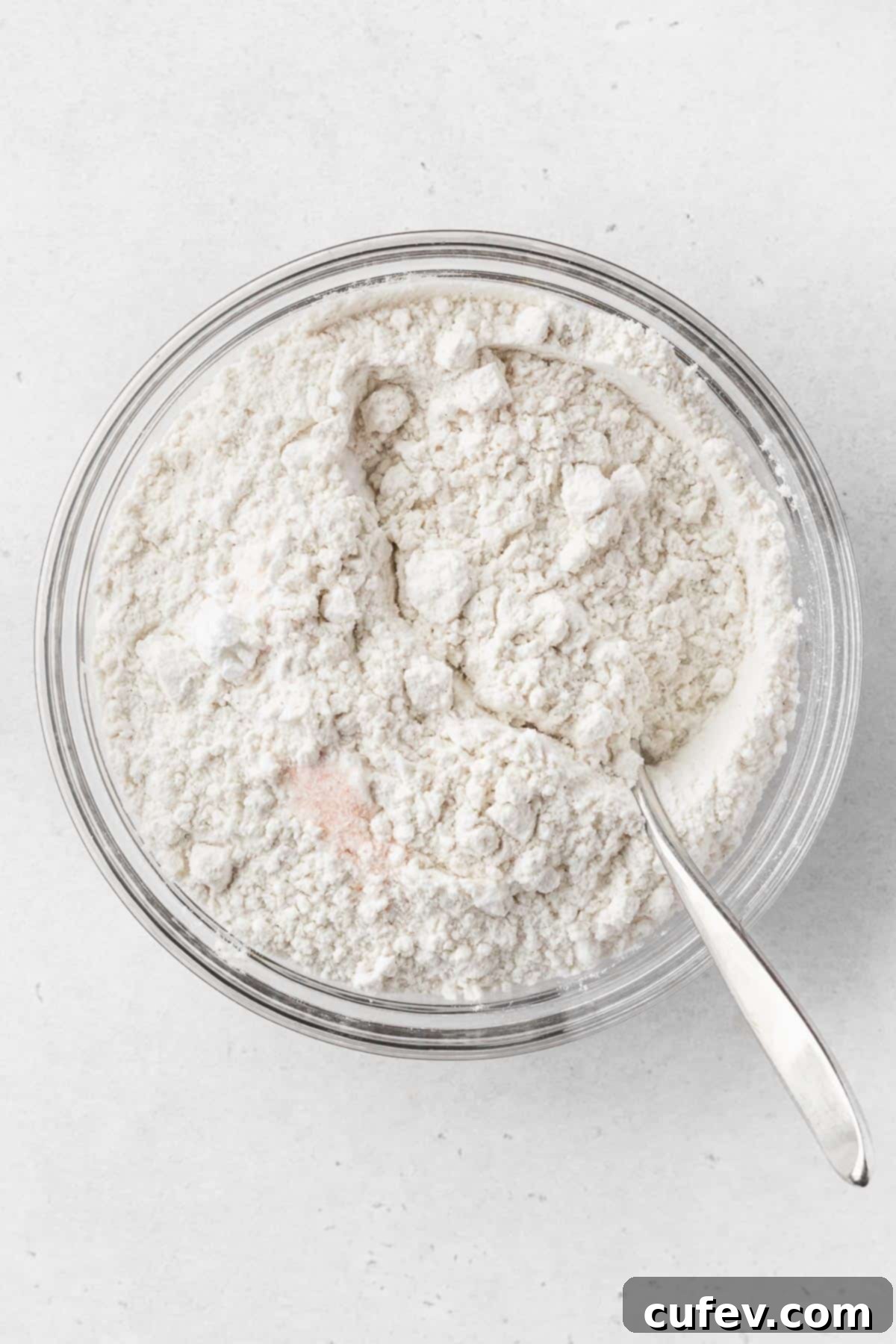
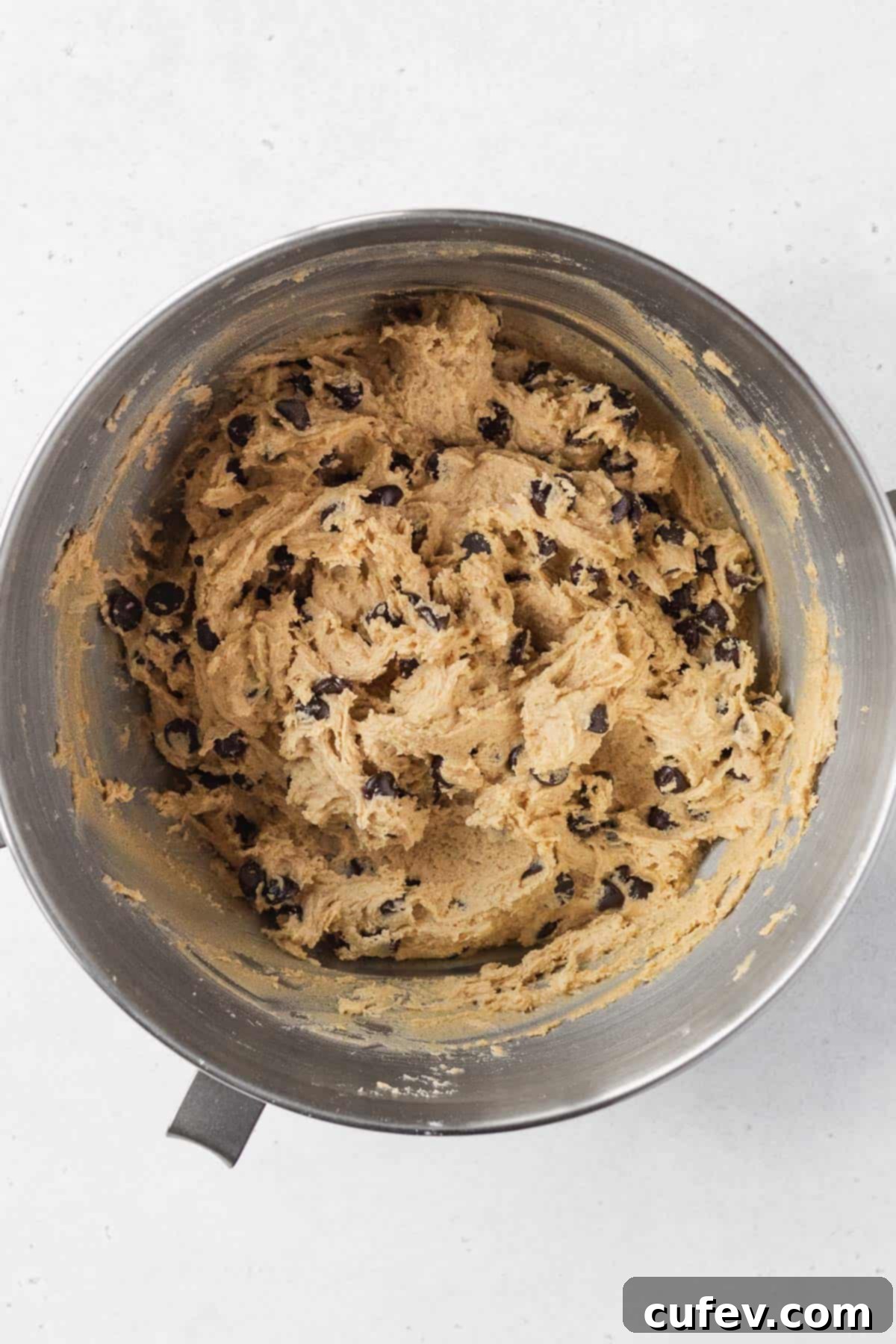
Step 3: Bake and Cool. Once your dough is sufficiently chilled, preheat your oven to 375°F (190°C). Line a sturdy baking sheet with parchment paper to prevent sticking and promote even baking. Using your cookie scoop, portion out the chilled cookie dough onto the prepared baking sheet, leaving ample space between each ball. My preferred scoop holds 1 tablespoon and 1 teaspoon (approximately 20ml), which yields a medium-sized cookie. If you don’t have a scoop, use a regular tablespoon and scoop out a slightly heaped amount of dough. For that bakery-perfect finish, gently press about 5-6 extra chocolate chips onto the top of each dough ball, and then sprinkle a tiny pinch of flaky sea salt on top. Bake the cookies for 18-19 minutes, or until the edges are lightly golden and set, but the centers still look slightly soft. Immediately upon removing them from the oven, let them cool on the baking sheet for at least 10 minutes. This crucial cooling period allows the cookies to finish baking, set their structure, and achieve their ideal chewy texture before you carefully transfer them to a wire rack to cool completely.
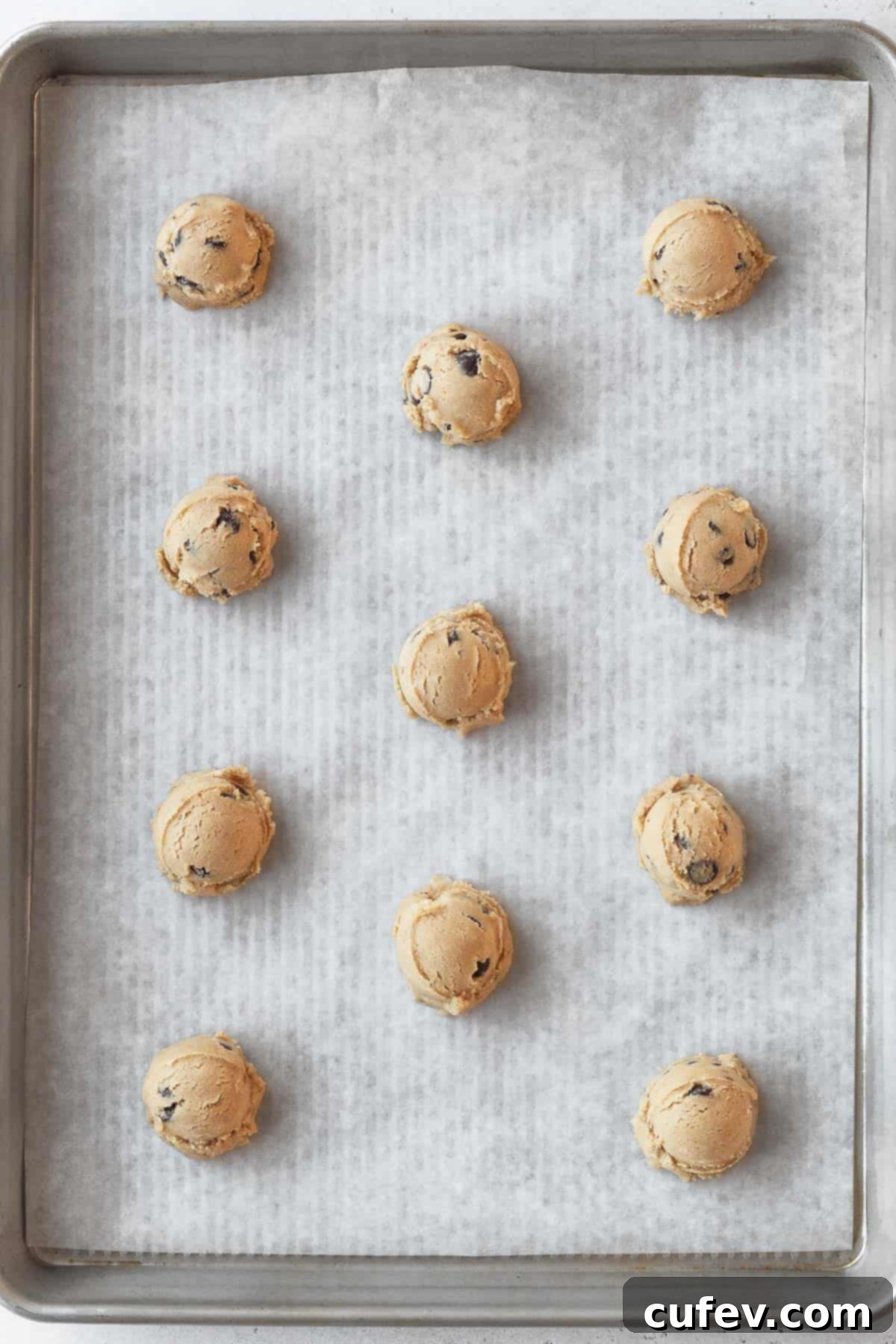
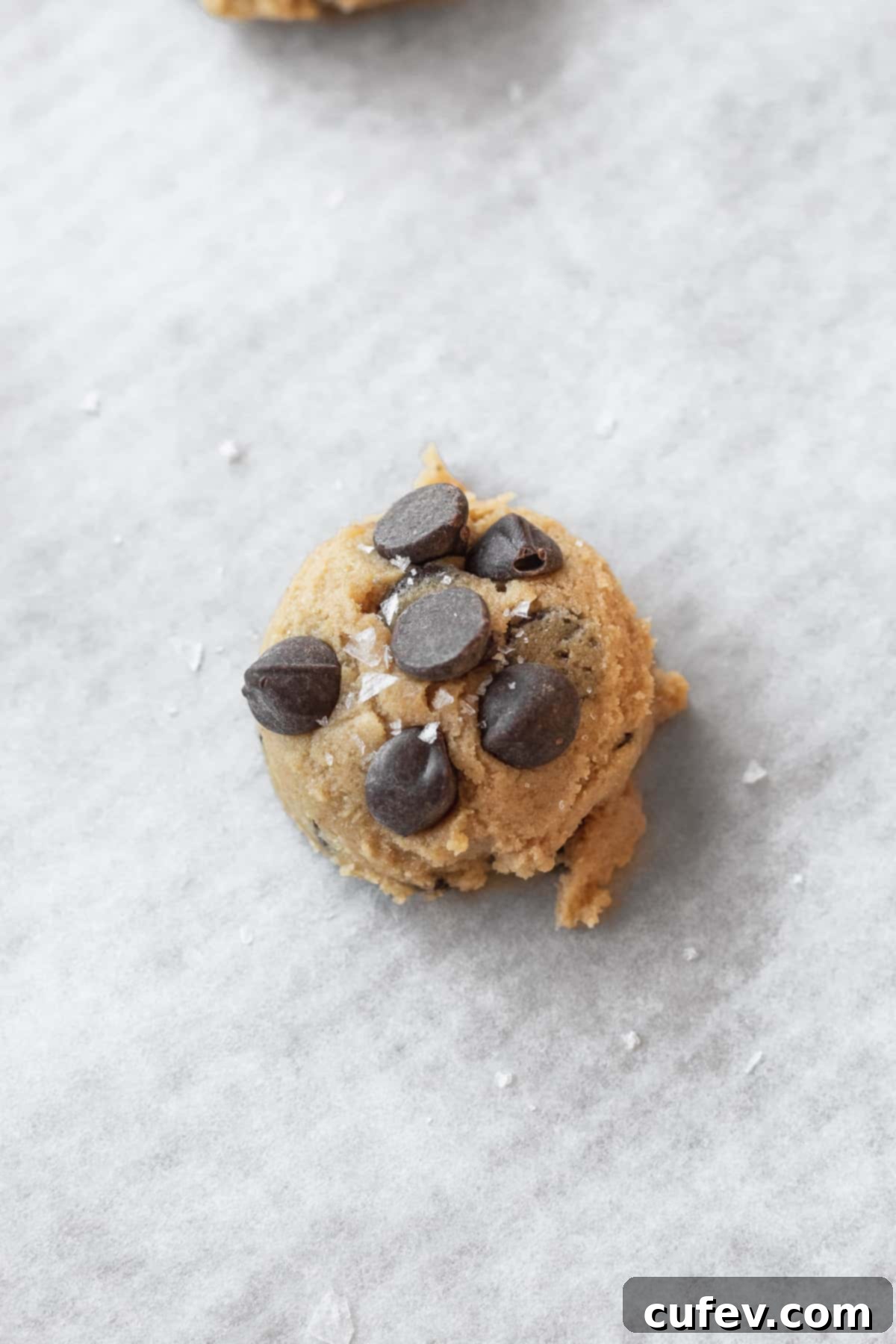
Why Chilling the Dough is Non-Negotiable for Superior Cookies
While it might feel like an extra step, chilling your cookie dough is absolutely essential for this recipe and plays a critical role in achieving the perfect gluten-free chocolate chip cookie. Do not skip this step!
1. Optimal Flour Hydration: Gluten-free flour blends, unlike traditional wheat flour, can sometimes result in a slightly gritty or sandy texture in baked goods. This often happens because the various flours and starches in the blend need time to properly absorb liquids. Resting the dough, even for a mere 30 minutes, allows the gluten-free flour blend to fully hydrate, resulting in a smoother, more cohesive dough and a significantly better cookie texture. For the absolute best texture, a minimum chill time of 2 hours is recommended, but chilling the dough overnight will yield an even more superior result.
2. Preventing Excessive Spreading: Chilling the cookie dough solidifies the butter within the mixture. When this cold dough enters a hot oven, the butter melts at a much slower rate compared to room-temperature butter. This gradual melting helps the cookies maintain their shape and thickness as they bake, preventing them from spreading too rapidly and becoming thin, flat, and greasy. A well-chilled dough is the secret to producing thick, gloriously chewy, and wonderfully gooey cookies with a substantial bite.
3. Deepening and Intensifying Flavors: The chilling process isn’t just about texture; it’s also a flavor enhancer. As the cookie dough rests in the refrigerator, the sugars within the dough gradually lose some of their moisture. This slight dehydration concentrates and intensifies the flavors, particularly the rich, caramel notes from the brown sugar. The result is a more complex, well-developed, and profoundly satisfying taste experience that sets these cookies apart.

Gluten-Free Chocolate Chip Cookie Recipe
Dessert, Snack
American
15 minutes
8 minutes
2 hours
2 hours
23 minutes
44
cookies
133
kcal
Ai Willis
Print
Pin
Rate
Ingredients
-
1
cup
butter
softened at room temperature (can be dairy or dairy-free) -
1
cup
brown sugar
packed -
½
cup
granulated sugar -
1
large egg -
1
teaspoon
corn syrup
(optional, for extra fudginess) -
1½
teaspoons
vanilla extract -
2½
cups
gluten-free 1-to-1 baking flour
containing xanthan gum -
¾
teaspoon
fine salt -
½
teaspoon
baking soda -
½
teaspoon
baking powder -
2
cups
chocolate chips
plus extra for topping -
flaky sea salt
(for sprinkling, highly recommended)
Instructions
-
In a large bowl, cream together the softened butter, packed brown sugar, granulated sugar, and corn syrup until light and fluffy. Beat in the large egg, then add the vanilla extract and mix until fully combined and creamy. Set this wet mixture aside.
-
In a separate medium bowl, whisk together the gluten-free 1-to-1 flour, fine salt, baking soda, and baking powder. Gradually add this dry ingredient mixture to the creamed butter mixture, mixing on low speed until just combined to form a thick, cohesive cookie dough.
-
Gently fold in the chocolate chips with a spatula until evenly distributed. Cover the bowl securely with plastic wrap and place it in the refrigerator to chill for a minimum of 2 hours. For best results, chill the dough overnight.
-
Preheat your oven to 375°F (190°C). Line a baking sheet or cookie sheet with parchment paper. Using a cookie scoop (mine holds 1 tablespoon and 1 teaspoon, or 20ml), portion out the chilled cookie dough onto the parchment paper, ensuring sufficient space between each cookie. Top each dough ball with a few extra chocolate chips for a beautiful bakery-style finish, and sprinkle a tiny pinch of flaky sea salt over each. Bake for 8-9 minutes, or until the edges are golden and the centers are still soft. Allow the cookies to cool on the baking sheet for at least 10 minutes before carefully transferring them to a wire rack to cool completely.
Notes
Love this recipe?
Snap a photo and share tagging
@aimadeitforyou or tag
#aimadeitforyou!
Nutrition
Serving:
1
cookie
|
Calories:
133
kcal
|
Carbohydrates:
18
g
|
Protein:
1
g
|
Fat:
7
g
|
Sodium:
82
mg
|
Fiber:
1
g
|
Sugar:
12
g
Storage & Freezing Tips for Gluten-Free Chocolate Chip Cookies
Once baked, you’ll want to enjoy these delicious gluten-free chocolate chip cookies at their best and know how to preserve them. Here are the optimal ways to store and freeze both baked cookies and raw dough:
Storing Baked Cookies: These cookies are undeniably at their peak deliciousness on the day they are baked, especially when still slightly warm and gooey. However, they will remain wonderfully fresh for approximately 3 days if stored correctly. To keep them soft and flavorful, place them in an airtight container at room temperature. For an extra treat, a quick 10-15 second reheat in the microwave can bring back some of that freshly baked warmth and melt. You can also prepare the cookie dough a day in advance and store it in the refrigerator overnight, then bake fresh cookies the following day.
Freezing Baked Cookies: To extend the life of your baked cookies, freezing is an excellent option. Once the cookies have cooled completely, wrap each individual cookie tightly in a couple of layers of plastic wrap. This extra layer of protection helps to prevent freezer burn. Then, place the wrapped cookies into a heavy-duty freezer bag or an airtight freezer-safe container. They can be stored in the freezer for up to one month. To enjoy, simply thaw them at room temperature or warm gently in the microwave or oven.
Freezing Cookie Dough: Freezing raw cookie dough is a fantastic way to have fresh, warm cookies ready at a moment’s notice. After chilling the dough as instructed, scoop out individual portions using your cookie scoop and arrange them on a piece of parchment paper on a baking sheet. Place the baking sheet in the freezer until the dough balls are completely solid (this usually takes 1-2 hours). Once frozen solid, transfer the dough balls to a freezer bag or airtight container, ensuring they don’t stick together. Frozen cookie dough can be stored for up to a couple of months.
When you’re ready to bake from frozen, there’s no need to fully thaw the dough. Simply remove the desired number of cookie dough balls from the freezer about 10-15 minutes before your oven is preheated to allow them to slightly soften. You may find that frozen dough requires an extra minute or two of baking time, depending on how cold the dough remains when it enters the oven. Look for the same visual cues – golden edges and slightly soft centers.
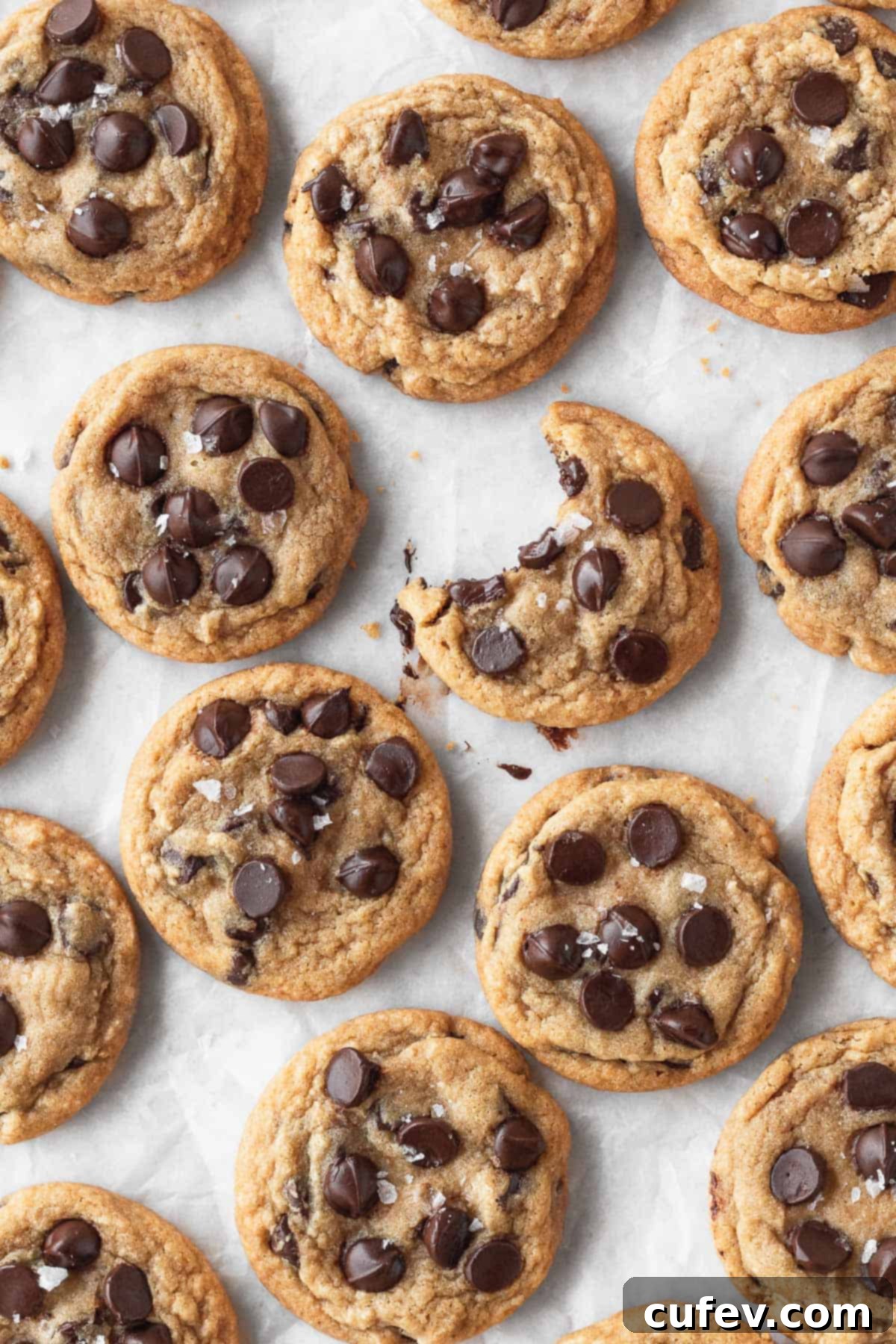
Frequently Asked Questions About Gluten-Free Chocolate Chip Cookies
For these gluten-free chocolate chip cookies, I have found that Bob’s Red Mill Gluten-Free 1-to-1 Baking Flour yields the most consistent and delicious results. I’ve experimented with other blends, including a popular measure-for-measure blend by King Arthur, but found they didn’t quite achieve the same superior texture. When selecting your gluten-free flour blend, the most crucial criteria are that it’s designed to be a direct cup-for-cup replacement for all-purpose flour and, importantly, that it includes xanthan gum in its ingredients. Xanthan gum is vital for providing structure and elasticity in the absence of gluten, preventing your cookies from becoming crumbly.
Even with the best intentions, cookies sometimes bake into irregular shapes. A clever trick to achieve perfectly round cookies is to use a circular cookie cutter (slightly larger than your baked cookie) or even the rim of a glass. Immediately after removing the nicely underbaked cookies from the oven, place the cookie cutter around a “wonky” cookie and gently shuffle it around. The warmth and malleability of the freshly baked cookie will allow it to conform to the round shape of the cutter, creating a flawless circle. This works best when the cookies are still hot from the oven.
While almond flour is a fantastic gluten-free alternative, it behaves very differently from a 1-to-1 gluten-free blend. Direct substitution in this recipe is not recommended, as it will significantly alter the cookie’s texture and moisture content. If you’re specifically looking to bake with almond flour, I highly recommend trying my dedicated recipe for almond flour chocolate chip cookies instead! That recipe is specifically formulated to be just as soft, gooey, and buttery as this one, but perfectly optimized for almond flour.
Absolutely, making these cookies dairy-free is straightforward! The primary swap involves replacing traditional dairy butter with a high-quality vegan butter. Ensure your chosen vegan butter has a fat content of at least 8 grams per 2 teaspoons for the best texture; refer to the “Key Ingredients” section for tips on adjusting if your vegan butter has a lower fat content. Additionally, make sure to use chocolate chips that are explicitly labeled as dairy-free or vegan. With these simple substitutions, you can enjoy equally delicious dairy-free chocolate chip cookies.
Flat cookies are a common baking frustration, and several factors can contribute to it, especially in gluten-free baking. Some of the most common reasons include using old or expired leavening agents (baking soda or baking powder) that have lost their potency, not chilling your dough sufficiently (which means the butter melts too quickly in the oven, causing the cookies to spread), or incorrectly measuring your flour, leading to too little flour in the dough. Ensure your butter is properly softened but not melted, your leavening is fresh, and you’ve accurately measured your ingredients, preferably with a kitchen scale.
Dry and crumbly cookies are often a sign of too much flour, insufficient moisture, or improper handling. This can happen if you over-measured the gluten-free flour (again, a kitchen scale is your best friend here!), didn’t allow the dough enough time to rest and hydrate in the refrigerator, or prematurely moved the cookies from the hot baking sheet to a wire rack before they had a chance to set and firm up. Allowing cookies to cool on the baking sheet for the recommended time is crucial for their final texture.
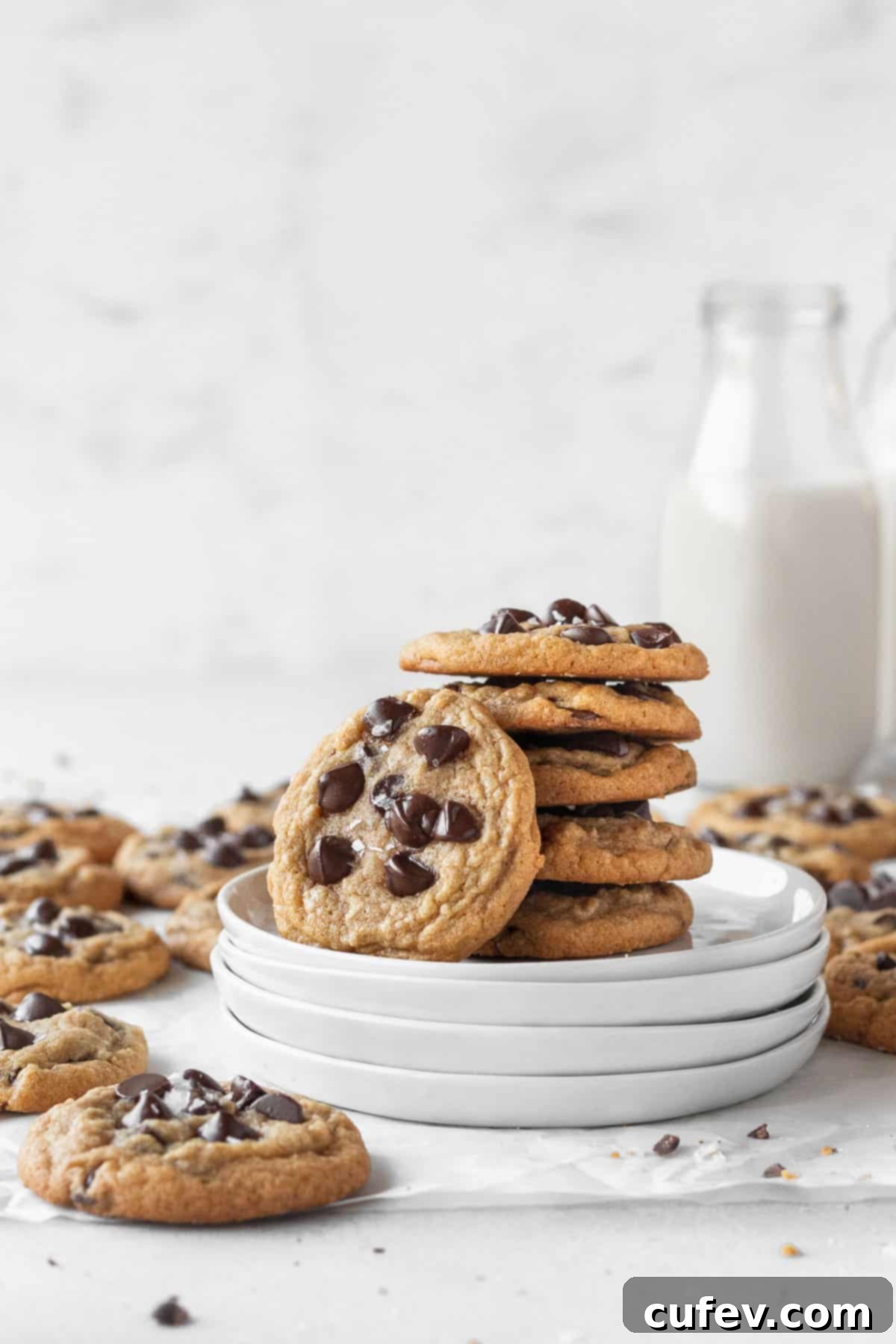
Explore More Delicious Gluten-Free Dessert Recipes
If you’ve enjoyed these incredible gluten-free chocolate chip cookies and are eager to discover more wholesome and delightful treats, you’re in luck! I have a fantastic selection of other gluten-free dessert recipes that are just as satisfying.
For those who love a hearty cookie, be sure to try my gluten-free oatmeal cookies. They are incredibly versatile and pair wonderfully with either chocolate chips or plump raisins. Alternatively, for a slightly different take, my friend Tiffany at Well Fed Baker offers these equally delicious gluten-free oatmeal chocolate chip cookies.
If you’re looking for chocolate chip cookies with a twist, especially if you’re mindful of sugar intake, then these unique chocolate chip chickpea cookies are an absolute must-try. I promise they are surprisingly delicious and don’t taste like chickpeas at all!
Planning for the holidays or a festive gathering? My collection of seasonal gluten-free options will surely impress. Consider baking my cheerful gluten-free Christmas cookies, the warmly spiced chewy ginger cookies with maple glaze, or the classic and charming gluten-free thumbprint cookies. All are fantastic choices to add a special touch to your celebrations.
And if you’re in the mood for something distinctly different from chocolate, these bright and zesty vegan lemon curd thumbprint cookies offer a refreshing citrusy escape.
Beyond cookies, I also have a range of other amazing gluten-free baked goods perfect for any occasion. Don’t miss out on my rich gluten-free chocolate cake, the decadent gluten-free German chocolate cake, a comforting slice of gluten-free coffee cake, or the wonderfully sweet and tangy gluten-free pineapple upside-down cake. These are some of my personal favorites!
